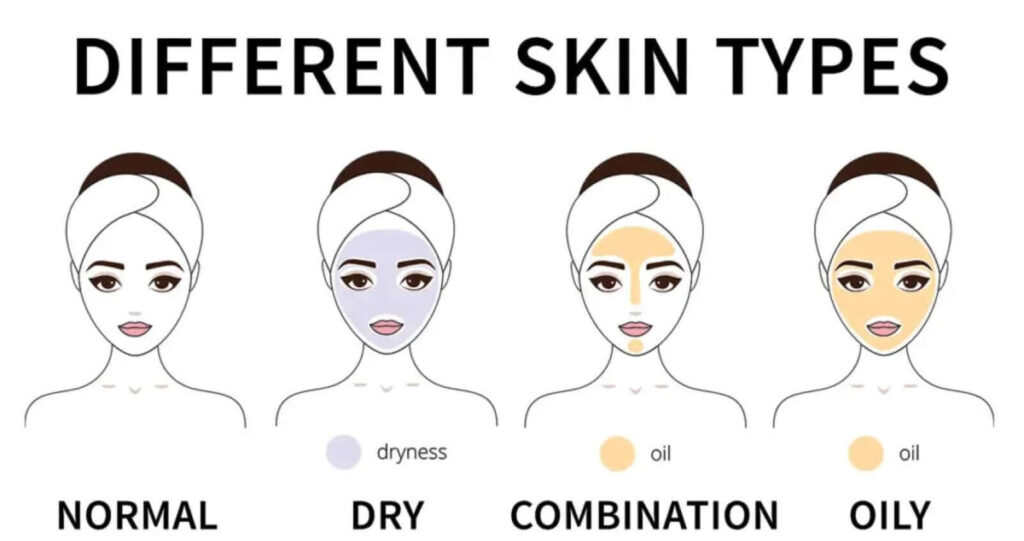Skincare
How to Identify Your Skin Type: A Simple Guide
Understanding your skin type is essential for building an effective skincare routine. Whether you
have oily, dry, combination, or sensitive skin, knowing your skin type can help you choose the
right products for your unique needs, ensuring healthier and more balanced skin. Here’s a simple
guide to help you identify your skin type.

1. Start with a Clean Canvas
To accurately assess your skin type, begin by cleansing your face with a gentle, sulfate
free cleanser to remove makeup, dirt, and excess oils. After cleansing, wait for about an
hour before analyzing your skin. This gives your skin time to return to its natural state,
free from any products.
2. Pay Attention to How Your Skin Feels
Oily Skin: If your skin feels shiny or greasy, particularly around the forehead, nose, and
chin (the T-zone), you likely have oily skin. Oily skin produces excess sebum, leading to
a shiny appearance and sometimes clogged pores.
Dry Skin: If your skin feels tight, rough, or flaky after cleansing, it may be dry. Dry skin
lacks moisture, resulting in a dull complexion, rough texture, and possible irritation.
Combination Skin: Combination skin has both oily and dry areas. Typically, the T-zone
may feel oily, while the cheeks and other areas feel dry or normal.
Normal Skin: If your skin feels neither too oily nor too dry, with a smooth texture and
even tone, you likely have normal skin. It is well-balanced and free from significant
imperfections.
Sensitive Skin: Sensitive skin is prone to irritation, redness, or inflammation. It may
react poorly to certain skincare products or environmental factors, causing discomfort or
burning sensations.
3. The Blotting Paper Test
Use a blotting paper to test for oil production. Gently press a sheet of blotting paper on
different areas of your face and check for oil marks.
o Oily skin will show oil marks on the T-zone and possibly other areas.
o Dry skin will show little to no oil.
o Combination skin will show oil marks in the T-zone but not on the cheeks.
o Normal skin will show only minimal oil, typically in the T-zone.
4. Assess How Your Skin Reacts Over Time
Over the course of the day, pay attention to how your skin behaves. Does it feel greasy by
midday? Does it feel tight or flaky after a few hours? Your skin’s behavior throughout
the day can help you further understand its needs.
5. Consult a Professional
If you’re still unsure about your skin type or experience ongoing skin concerns, consider
consulting a dermatologist or skincare expert. They can accurately assess your skin type
and recommend appropriate products and treatments.
6. Why Skin Type Matters for Your Skincare Routine
Knowing your skin type allows you to select the right products tailored to your specific needs.
For instance, oily skin benefits from oil-free products, while dry skin needs hydrating and
moisturizing formulas. Choosing the right products based on your skin type can lead to healthier,
more balanced skin.
By understanding your skin type and using products designed for your unique needs, you’ll be on
your way to achieving your healthiest skin yet. Start today by identifying your skin type and
creating a skincare routine that works for you.
